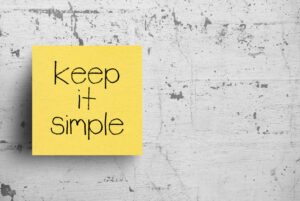
Do you receive contract review requests via emails or Slack? Do you have a hard time finding and sharing legacy contracts? Were you trapped in an auto-renewal because you missed the termination deadline? Did you use public generative AI to draft a contract and were a victim of its hallucinations?
Contract managers, counsels, and professionals everywhere are dealing with the same contract management challenges globally. Regardless of the industry, their experiences in contract review, tracking, security, and storage are consistent. Many businesses now use a contract lifecycle management software or SaaS solution (CLM) to help streamline contract review intake, protect existing contracts, track renewal dates, and monitor AI usage resulting in improved productivity, security, and growth.
From small business solutions like Zoey, to mid-size and large enterprise platforms like Ironclad, Malbek, SpotDraft, and Lexion (recently acquired by DocuSign), there are CLM options available to manage contracts efficiently, securely, and within budget for businesses of all sizes in all industries. In 2024, there is no good reason why a business is not using a CLM to create, organize, and analyze their contracts.
This article will help you identify the following common pain points when dealing with contracts management and show you how a CLM can resolve them.
- Intake and Execution
- Security and Access
- Legacy Contracts
- AI-Powered Redlining
- Renewal Tracking
Learn More: Attend the CrushContracts Academy full-day CLE conference in Chicago and virtual taking place on June 21, 2024. There are four CLM Maximizers courses where experts will discuss how they solve top contracts pain points with CLM. Go here and enter promo code CCA10CN for 10% off your ticket!

#1 Intake and Execution
Pain Points:
- Inconsistent review requests
- Poor review status and approval tracking
- Poor version control
- Risk of strategy disclosure to counterparty
- Weak signature tracking

Sending or receiving a contract for legal or risk review is a critical first step in negotiating and signing contracts. Most contract review requests are made via e-mail. In some cases, paper requests are still in practice. This creates chaos and mismanagement for the contract reviewer, requestor, and stakeholder. E-mail contract review requests often lack critical information relating to the business deal creating multiple emails back and forth for the contracts department to gather necessary information. Some contracts professionals respond to an e-mail request with an intake form to be filled out by the requestor. Then the contract manager or counsel reviews the contract relying on the intake form responses. These responses may be altered at times creating discrepancies in the contract terms mid-negotiations and delay in execution.
Using emails to track contract reviews status is inefficient. It adds duplication or work, and offers no real time visibility into the status of the review, approvals, and signatures. Contract redline versions are often buried in emails and hard to retrieve when needed. This method is also inefficient because there’s always a risk of accidentally sending an internal e-mail with negotiation tactics to the counterparty. Realistically, managing new contract intake via e-mail at a scaling company is a nightmare, and bad practice in general.
Key CLM Benefits for Intake & Execution:
- Automated contract workflow
- Intake form standardization
- Visibility of contract stages
- Streamlining approvals
- Consistent version tracking
- Protection from unintended access and disclosure
- eSignature tracking
- Automated contract storage
- Integration with other SaaS applications
- Contract terms and conditions meta data tracking
A CLM can streamline contract intake, approvals, escalations, and signatures improving efficiency and compliance exponentially. All of this can be done in one system with better visibility for all stakeholders at any given time. A CLM empowers the contracts department in structuring how their contracts are received and reviewed, and enables stakeholders to submit their requests in an organized an efficient manner. A CLM facilitates a transparent negotiation process through centralized tracking and communication. This reduces redundant emails, missed deadlines, misunderstandings, and lost opportunities.
Contract intake request forms are built-in features of a CLM which enables the requester to initiate the request with all the necessary information in one step. Besides reducing manual effort, a CLM minimizes errors by automating the creation of contracts based on predefined templates. Many repetitive agreements such as non-disclosure agreements, and company polices, and waivers can be streamlined with a CLM by automating signature requests upon submitting the intake form without the need for human intervention at each step. This is very helpful in managing several new contract requests which ultimately become legacy contracts. CLM intake forms also generate critical metadata associated with the contract request which can later be retrieved for contract reporting.
With a CLM, you can store all the redline versions in the associated contract record with relevant notes and attachments. CLMs offer consistent version tracking for ensuring negotiation flexibility and reducing the risk of discrepancies. CLMs integrate with other SaaS Applications and work seamlessly with tools such as DocuSign, Salesforce, Slack, and email platforms to reduce multiple SaaS transitions and manual transfer of documents. Many CLMs allow contract updates directly from a third party SaaS to reduce work for the contract mangers.
CLMs also provides a centralized private platform for all stakeholders to access and comment on inflight contracts. This prevents any unintended disclosure of internal discussions and tactics with the counterparty or anyone not privy to the respective business deal. CLMs also come with e-signature integration so you can send, track, and sign the final contract in one place. Once a contract is signed through a CLM, it will automatically store that contract in its repository for safekeeping, metadata extraction, running reports and other uses.
#2 Contract Security & Access
Pain Points:
- Inconsistent manner of contract copy request
- Unauthorized access to contracts
- No role or permission-based access control
- No contract access activity tracking
- No centralized contract repository

Contract security involves taking pragmatic measures to protect contracts from unintentional or unauthorized access, disclosure, modification, and destruction. Failure to secure contracts and the sensitive information contained within them can jeopardize a business’s revenue, operations, and reputation. Contracts must protected, and only be accessible based on roles and permissions. Often, contracts are stored in filing drawers, network drives, cloud drives, emails, and local drives. That is unsafe, inefficient, and creates legal liability for the company.
Contract copy request and sharing between colleagues and leadership is frequently handled through e-mail, slacks, other unsecure and inefficient channels. This extremely risky and a terrible practice. Contracts contain trade secrets, confidential information, and personnel data which requires an enhanced security and access control system in place four protection and regulatory compliance.
Key CLM Security & Access Benefits:
- Single sign-on integration
- Role-based access permissions
- Centralized contract repository
- Stakeholder access improvement
- Encryption
CLMs come with secure login and centralized repository with strict security settings to allow only role and permission-based access. A CLM effectively addresses several critical pain points regarding contract security by offering a range of advanced features and integrations. By implementing a reputable and robust CLM system with the help of their IT department and expert consultants, businesses can ensure their contracts are well-protected and efficiently managed safeguarding their hard work, trade secrets, intellectual property, and peace of mind.
A CLM comes with detailed role-based access controls ensuring that only authorized company personnel have the permission to view, access, or modify contracts. Most CLMs also simplify user access and enhance security by allowing users to log in with SSO integration using a single set of credentials. This role-based contract access feature enables business teams and leadership direct to access their respective contracts without delay or adding more work for the contracts department.
In a CLM, all contracts are stored in a secure repository making them easily accessible only to the authorized team members and reducing the risk of confidential information and data loss. Contracts are also encrypted in a CLM to protect sensitive information from unauthorized access ensuring compliance with data protection regulations. CLMs also automatically track all repository activity on the back end which is critical in reviewing any unauthorized access or contract disclosure incident review. With several access check points, usage tracking, and layers of security you can protect your contracts, and share them efficiently by using a CLM.
#3 Legacy Contracts
Pain Points:
- Scattered storage
- Limited accessibility
- Difficulty in retrieval
- Lack of structural metadata
- Inconsistent storage and access
- Inconsistent drafting and execution
- Missing parent-child agreements
- Migration challenges

Legacy contracts are pre-existing active or expired agreements that were created and executed before the implementation of a modern CLM at a company. They can be based on the company’s in-house templates or counterparty paper. They are typically stored in various formats such as paper documents, PDFs, or images in outdated physical and digital repositories.
Legacy contracts often present several challenges. They are frequently stored in different locations including network drives, email attachments, or physical filing cabinets making them difficult to locate and manage. Accessing and reviewing these contracts can be cumbersome, particularly if they are stored in physical form or outdated digital formats.
Tracking legacy contracts often involves manual processes for tracking key dates, terms, and obligations, increasing the risk of errors and inefficiencies. They may be inconsistently drafted and executed, and lack standardized formatting due to inconsistent original paper source. Legacy contracts also lack structural metadata leading to difficulties in sorting, organizing, retrieval, and reporting. Important relational links between parent and child agreements are often missing in legacy contract databases.
Eventually, integrating these contracts into a new CLM is also time consuming and challenging due to differences in format, structure, and data tagging.
Key CLM Benefits for Legacy Contracts:
- Centralized storage
- AI-powered data extraction
- Structured data organization
- Historical reporting
- Advanced search functionalities
- Improving consistency in legacy contracts
CLM offers several features to optimize and innovate the management and protection of legacy contracts. Companies can move all of their contracts into a centralized and organized repository creating a complete and accurate source of truth for all contracts. Now, CLM utilizes AI to extract contract data creating consistent data tagging. It structures contracts and contract data in an organized manner for actionable use.
You can run reports on past contracts based on data to gain insights and take necessary action. CLMs also offer advanced search functionalities, and automated indexing capabilities to efficiently locate and retrieve specific contract information, run reports, and communicate legacy contract terms to stakeholders effectively.
CLMs also provide in-house contract template workflows ensuring standardization of newer contracts being generated by the company. This reduces inconsistencies and misunderstanding of contract terms and conditions, as well as assists in creating practical contracts playbooks. Please see my article on creating practical contracts playbooks to learn more.
By using a CLM with updated style and structure for current and future contracts, companies can also improve their legacy contracts’ condition. Once a legacy contract is transferred into a CLM, the contract is stored, tagged, and optimized to fit into the newer enhanced contract system created by the company.
By addressing these pain points, a CLM system significantly improves the management, accessibility, and utility of legacy contracts, ensuring better compliance and operational efficiency.
#4 AI Powered Redlining
Pain Points:
- Incapable of complex and contextual review
- Unable to give legal advice
- Inconsistent Quality
- Lack of Security
- Disclosure of user data
- Impact on personal analytical skills

AI is now infused in all business technology. From Microsoft Word to email inbox, AI is everywhere and it is only expanding its reach. By fall, Apple will be powered with ChatGPT. It is a good thing if accessed and leveraged strategically.
AI tools are trained on a vast collection of publicly available historical contracts, legal precedents, statutes, and other relevant materials. It significantly enhances contract review and management processes. These AI tools improve contract redlining by automatically scanning contracts, suggesting company-standard revisions, highlighting changes, and providing feedback on wording, clauses, or legal terminology. Additionally, AI can provide contract risk scores by analyzing contracts to identify potential risks based on the language, clauses, and terms used, and matching them against your company’s risk profile.
AI’s predictive analytics capabilities are invaluable in proactively detecting and addressing risks, renewals, liabilities, and other critical terms, thereby reducing human error and ensuring a reliable contract management process at the company.
Most common uses of AI in contracting are review, redlining, data extraction, document summary, and data insights.
AI dramatically speeds up the contract review process by instantly identifying and redlining irregularities in contracts and saving hours of manual review. It uses precedence to save time by offering redline suggestions based on a company’s preferred clause and language guidelines populated in a contract playbook. AI frees up valuable time for legal teams by automating redundant and tedious tasks to focus on critical work that requires human intelligence.
AI Related Risks
Even though AI uses and potential benefits in generating and reviewing documents has grown exponentially, it is still in the early stages when it comes to contracts negotiations. There are many key contract redlining functions that AI cannot accomplish, at least for now.
The key to successful contract negotiations is humanizing the contract. AI cannot do that. It does not understand or is capable of empathy and emotional intelligence, which is necessary in all business relationships. Most AI is also not trained on local laws regulations, but that is changing rapidly. However, it will take much longer for AI to add cultural nuance or industry practice context to contract language. It cannot perform complex legal strategy review or and give legal advice on a deal. It is not ready to handle unique variations from the training model. It is also not sophisticated enough to balance risk versus reward on a case-by-case basis.
There is a new AI contract application popping up every day in our industry. While most of these applications are relying on the same three or four major generative AI providers, their accuracy is still unreliable as they many may not be built with legal and contracts expertise. The generated document may contain inaccuracies that may create legal loopholes for the counterparty and third parties leading to liabilities for your company. This will also create professional liability for the contracts professional.
Privacy is one of the biggest concerns when using non-API or unprotected AI to generate, review or redline, and manage your contracts. The contents of your contract are visible to the AI provider and may be used to train their AI models. It will also capture sensitive information like party names, contract value, intellectual property details, etc. which can jeopardize your company’s security and compliance.
There are also ethical concerns to think of while using AI to redline a contract. Contracts counsels and professionals must consider the duty to disclose if they are relying entirely on AI to review and redline a contract without quality check. This may impact the contract professional’s job security. They must ensure that they are following corporate AI usage policies. Most importantly, they have to be careful they don’t dull their cognitive and analytical skills by over reliance on AI.
Key CLM AI Redlining Benefits:
- Data privacy
- Playbook training
- Quality check
- Extended use cases
AI powered CLMs have enhanced security and privacy as they are restricted from using your content and data to train their AI models. This is the biggest benefit of using a CLM AI versus a public AI tool. Contracts professionals can confidently use their AI powered CLM to review and redline contracts without a risk of unauthorized disclosure and non compliance with privacy regulation. API powered AI is also subject to indemnity and liability provisions in the supplier contract adding protection to the end user.
AI redlining feature in a CLM is specifically designed to assist the lawyers and contracts professionals unlike the generic public AI tools. It works on your training and preferences, so the results are more controlled and consistent with your style of redlining. Some CLM AI features can recognize patterns and predict your objections to a contract based on your continued usage and playbook. You should still quality check the output until your CLM AI reading and redlining abilities have proven to be a hundred percent accurate.
While most states are evolving their rules around using AI to perform legal and other professional functions, it is always best to use good judgment and remain honest about your use of it. A practical benefit of using an AI powered CLM is that your department is on notice that you are using AI to redline contracts. Additional notice may not be required. You can also share with your business stakeholders that you utilize AI to speed up the review process by indicating it in your contract playbook. See my article on how to draft a practical contract playbook for more guidance.
Users can control the level of usage and dependency on their CLM AI. This allows the contracts professionals to leverage their CLM AI in creating new solutions keeping their analytical skills sharp.
#5 Renewal Tracking
Pain Points:
- Last minute amendments and renewals
- Service disruption
- Overages charges
- Pressured into unfavorable terms
- Missed deadlines
- Lost business
- Lost opportunity
- Lost protection

Contract renewal tracking is essential for extending contractual relationships and maintaining ongoing business engagements. It ensures that parties can continue to benefit from the original agreement without the risk of loss of service or payment. It helps stakeholders and legal teams be mindful of auto-renewals and notice periods. Effective contract renewal is crucial for any company’s business model, but managing the renewal process can be challenging without a clear process and automation.
Unfortunately, most contract renewal requests are made very close to the deadline creating extra pressure and frustration for all the parties involved. Without any contract renewal or contract termination auto tracking process and reporting, most contracts departments are inundated with last minute contract renewal or termination request on top of their existing workload. It gets even worse during month-end and quarter-end.
Last minute contract renewal requests put pressure on both sides into accepting unfavorable terms and conditions which may create additional financial and legal obligations, and a deterioration in the business relationship. This also creates frustration within the company between stakeholders and contracts departments.
Companies risk losing services, revenue, and protection if there is a gap between contract termination and renewal. Additionally, parties can face overage charges and penalties for operating or using services without an active contract. All of these reasons necessitate a practical automated contract renewal tracking system at all businesses.
Key Renewal Tracking CLM Features:
- Automate contract renewal reminders
- Automatically send renewal agreements.
- Auto termination tracking
- Auto renewal tracking
- Auto-renewals
- Data tracking
- Automated reports
- Email reports to stakeholders
- Set 90, 60, 30 day reminders
A CLM equips contracts professionals with the tools to manage contract renewals proactively and successfully. By leveraging contract metadata and metrics, CLM provides critical reminders and insights into your agreements, enabling you to stay ahead of important dates. The system can also remind you of other critical events, such as fulfillment, milestones, non-renewal or termination notice deadlines.
A CLM can send automatic notifications in the system and via email to all stakeholders and contracts department on their contract terminations to avoid missed deadlines and breach of contract. It also monitors and reports on contract performance, providing valuable insights for continuous improvement.
You can set reminders at thirty, sixty, and ninety day intervals to prepare in advance for contract terminations and renewal discussions. This will improve negotiation power for and avoid last minute pressured deals. Many CLMS can automatically send renewal or termination notices based on custom triggers. Automated renewals and alerts offered by CLMs streamline the contract renewal process, ensuring you never miss a critical deadline.
Learn More: Attend the CrushContracts Academy full-day CLE conference in Chicago and virtual taking place on June 21, 2024. There are four CLM Maximizers courses where experts will discuss how they solve top contracts pain points with CLM. Go here and enter promo code CCA10CN for 10% off your ticket!

The Power of CLM
CLMs are the latest digital solution for managing contracts and reducing contract management pain points. Adopting a CLM will transform your contract management process making it seamless and more effective, and empower your business teams to achieve greater efficiency. Use a CLM to reduce the manual work, increase productivity, and improve your role as an in-house counsel, contracts manager or professional.
A CLM provides a dedicated secure space for storing current and legacy contracts, various versions, attachments, communication and other documents created throughout the deal’s lifecycle. It secures all contracts, agreements, and documents in one centralized location, making them flexible, searchable, and dynamic. Access permissions can be easily configured in a CLM by roles, departments, and document, categories.
By implementing contract renewal best practices utilizing a CLM, businesses can streamline their contract renewal process, ensure continuity, minimizing the risk of business interruptions, secure additional time for thorough contract reviews, improve customer retention, easily track all upcoming contract renewal dates and expirations, never miss a renewal opportunity.
Simplify work to create more time for what matters most. Leverage CLM AI technology and expert assistance to enhance your work quality, enable you to take on more sophisticated issues, and improve your personal time by adding the freedom to spend time with family or on activities that are not contracts related.


















